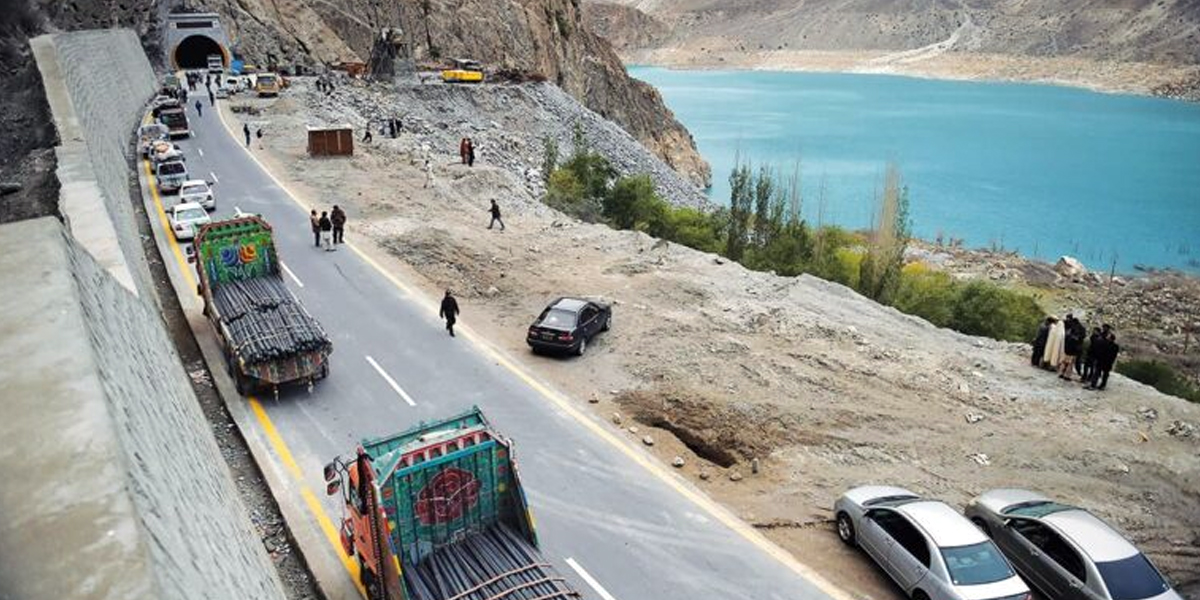Balochistan is the largest province of Pakistan and the pinnacle of the China-Pakistan Economic Initiative (CPEC), a flagship initiative of the Belt and Road Initiative (BRI) led by China. The natural resources of Balochistan and its strategic location did not help to alleviate the province’s poverty. However, CPEC offers the province some optimism because it would help it capitalize on its untapped natural riches, leading to growth, wealth and regional connectivity.
Balochistan is the pinnacle of the China-Pakistan Economic Initiative (CPEC), a flagship initiative of the Belt and Road Initiative (BRI) led by China. Balochistan is the largest province of Pakistan in terms of territory but the smallest in terms of population. The natural resources of Balochistan and its strategic location did not help to alleviate the province’s poverty. However, CPEC, on the other hand, offers the province some optimism because it would help it capitalize on its untapped natural riches, leading to growth and wealth.
Balochistan is blessed with abundant potential to capitalize on its natural resources, blue economy, and agricultural and livestock sectors building Special Economic Zones (SEZs) under CPEC will pave the way for prosperity and regional connectivity.
Agriculture: Balochistan is termed “The fruit basket of Pakistan”. Ironically, the province does not contribute to the nation’s date export. They will be encouraged to increase fruit output by modernizing the agricultural industry, providing subsidies to the farmers, and resolving water concerns. They would be able to export crops to other countries thanks to CPEC. Almost 75% of the province’s population, who depend on agriculture, lives in rural areas. 62% of the total farm income comes from the crops. 67% of the labor force in the province is employed in the agricultural sector. The economies of Jafarabad, Naseerabad, Usta Mohammed, and Dera Murad Jamali are centered on agriculture.
Livestock: Balochistan’s economy is heavily reliant on the livestock industry, therefore taking advantage of it through CPEC will be beneficial. Of the nation’s sheep, camels, and goats, the province provides 52.0%, 41.0%, and 22.0% of each, respectively. Additionally, it provides work for around 66% of households in dry areas. In those areas where crop cultivation is not feasible, livestock looks to be a blessing in disguise.
Blue Economy Potential: By utilizing the potential of the oceans, the blue economy is created. Oceanic activity on a global scale was estimated to be worth roughly $1.5 trillion in 2010 and is projected to be worth $3 trillion by 2030. (OECD, 2016). The blue economy is expected to generate $ 24 trillion worth of financial activities, including new resources and jobs. Marine resources abound in the coastal regions of Balochistan, which cover 750 km from Goth Haji Alano on the province of Sindh’s eastern border to Jiwani on the western border with Iran’s Gwadar Bay. The region’s fishing industry is underdeveloped. For a large portion of the local population living in coastal settlements, it continues to be an essential source of subsistence.
The CPEC has marked a landmark decade in 2023. Over a decade, CPEC helped to accelerate Pakistan’s economic development and soften the country’s image while also contributing to sustainable prosperity. (2023; S.N. Gilani). Before the big project, global investors continued to view Pakistan through the prism of terrorism and extremism. The perception of foreign investors has changed as a result of CPEC, and they are now willing to invest in the nation. Pakistan is now a secure place to invest because of China’s massive project. The CPEC is ostensibly helping the country flourish and develop because of its economic and political advantages. Under CPEC, infrastructure modernization, job possibilities, and steep economic growth are all advancing quickly.
Imminent Challenges to CPEC in Balochistan
There are numerous obstacles to the CPEC, including the separatist movement, a lack of advanced education, inadequate road infrastructure, the deterioration of democratic ideals, the failure to apply the 18th Amendment, and the involvement of external actors. Ostensibly, climate change is a bigger threat than terrorism and extremism. The province has been witnessing the impacts of climate change. Balochistan being the largest province will have to face more destruction caused by climate hazards. The 2022 floods wrecked, homes, buildings, bridges, and highways. Quetta the capital of Balochistan was almost disconnected from the rest of the country for nearly two months.
Balochistan is unique for Pakistan as well as for superpowers; the US, China, and India. They are very interested in Balochistan and CPEC hence the success of CPEC will determine Pakistan’s and Balochistan’s futures. Tim Marshall correctly states that “There is no Pakistan without Balochistan” in his intriguing book “Prisoner of Geography.” In light of this, former Pakistani Army Chief General Qamar Javed Bajwa asserts that Balochistan is necessary for Pakistan to be whole. Therefore, it needs to receive special consideration under CPEC.

